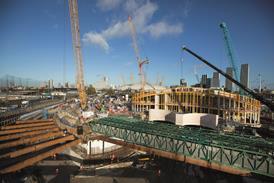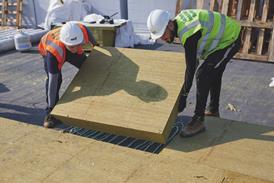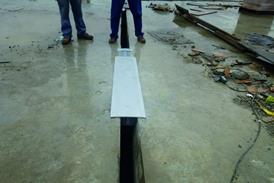- News
Regulations latest
All the latest updates on building safety reform
- Focus
- Comment
- Data
- Programmes
- CPD
- Events
- Jobs
- Subscribe
- Building Boardroom
Costing Steelwork 19: Market update

Costing Steelwork is a series from Aecom, BCSA and Steel for Life that provides guidance on costing structural steelwork. This quarter provides a market update and updates the five cost models previously featured in Costing Steelwork
Construction sentiment settled at a long-run equilibrium level at the end of 2021 – a Goldilocks level, neither too hot nor too cold. After an undulating year, the industry has found a broadly steady state. Construction activity is expected to plot a stable course over the first half of 2022. Existing workload momentum will ensure that activity holds up over the industry as a whole, but sector variance will continue – reflecting broader economic trends. Nevertheless, the cumulative effect of the last two years – in addition to the structural and systemic industry issues that pre-date the pandemic – mean there is work still necessary to recover lost ground. General business sentiment gained ground, reflecting the improved but not stellar economic activity. It is widely reported that supply issues continue to act as a drag on output and production efficiency. On-going constraints from labour, materials and components shortages are reported across most economic sectors.
The Office for National Statistics reported recently that all work construction output is now higher than it was immediately prior to the pandemic, with the output rebound regaining momentum after some fitful periods of recorded output in 2021. An important additional comparator for current workload is to all work output recorded in 2019. Evidently, the industry has a way to go still to match this level of activity before the pandemic began. New work output in Great Britain at Q3 2021 was broadly 10% higher than at the same point in 2020, in constant prices. However, it was 7% smaller than for the same quarter in 2019. Until pandemic effects wash through the yearly change calculations, it is instructive to compare current levels of industry workload to steady state 2019 output values, in order to understand the true levels of activity now. At a sub-sector level, infrastructure workload is digging the industry out of a hole. By way of a counterfactual, were this sub-sector currently posting output nearer to its long-run 10-year average, overall new work construction output across the country would be a long way short of the pre-pandemic peak level of H2 2019.
Read more…
Already registered? Login here
To continue enjoying Building.co.uk, sign up for free guest access
Existing subscriber? LOGIN
Stay at the forefront of thought leadership with news and analysis from award-winning journalists. Enjoy company features, CEO interviews, architectural reviews, technical project know-how and the latest innovations.
- Limited access to building.co.uk
- Breaking industry news as it happens
- Breaking, daily and weekly e-newsletters
Get your free guest access SIGN UP TODAY

Subscribe now for unlimited access
Subscribe to Building today and you will benefit from:
- Unlimited access to all stories including expert analysis and comment from industry leaders
- Our league tables, cost models and economics data
- Our online archive of over 10,000 articles
- Building magazine digital editions
- Building magazine print editions
- Printed/digital supplements
Subscribe now for unlimited access.
View our subscription options and join our community



















